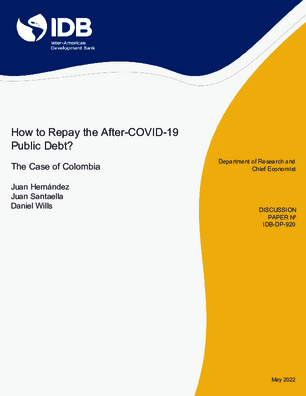How to Repay the After-COVID-19 Public Debt?: The Case of Colombia
Date
May 2022
The COVID-19 pandemic produced a shock to public finances throughout the world. In the case of Colombia, the public debt to GDP ratio increased from 39.8% to 65.0%. We use a two-country neoclassical general equilibrium model to determine which one-shot tax reforms make the new debt level sustainable. Our analysis shows that Colombia was on the wrong side of the Laffer curve for capital and labor income taxes before the crisis and hence would need to reduce those taxes to repay its current debt. Specifically, reducing the capital tax by four percentage points and the labor tax by three percentage points restores sustainability. In contrast, the analysis suggests that the economy is on the upward-sloping side of the Laffer curve for the consumption tax. An increase of 10 percentage points in the consumption tax generates a future path of primary surpluses big enough to repay the post-COVID level of debt. The results suggest that behavioral changes and general equilibrium effects are sizeable. Therefore, ignoring them will bias fiscal consolidation analysis.




